Loikaw Church, the legacy of martyrdom, that Fr Mario Vergara and Isidore Ngei Ko Lat
Loikaw (AsiaNews) - On 24 May, PIME missionary Fr Mario Vergara and Isidore Ngei Ko Lat, his faithful catechist, will be beatified at Aversa. The two were killed in 1950 in Burma, out of hatred for the Christian faith.
"May their heroic fidelity to Christ be an encouragement and example to missionaries and especially catechists in mission lands who carry out important and irreplaceable apostolic work, for which the whole Church is grateful," said the pontiff in making today's announcement.
"Gratitude" is also what fills the hearts of PIME missionaries and catechists working in Myanmar, the land where the two new blessed found martyrdom.
In 1950, the area where they lived and worked, in the Diocese of Tounggo, in east-central Myanmar near the border with Thailand, has now become Shadaw Parish Church, in the Diocese of Loikaw, which in late April celebrated its silver jubilee.
I had the good fortune and great joy to join in the festivities on 26 to 27 April. I was able to appreciate the vitality of this church, rich in vocations and faithful evangelists, despite its poverty, marginality and exploitation.
Lest we forget, until a few months ago the territory of the diocese, which is located in the State of Kaya, was still off-limits to foreigners because of tensions and fighting between Burmese forces and the Karen, a conflict that has lasted for the greatest part of the past 50 years.
One number is enough to appreciate the fruitfulness of the work of missionaries and catechists. In Loikaw, Catholics are 25 per cent of the population, this in a country where Catholics are not even 1 per cent.
On the occasion of the beatification of Fr Vergara and catechist Isidore, AsiaNews is publishing my account of the trip and the Jubilee in Loikaw.
***
At 5:30 pm on 26 April, the diocese began its Silver Jubilee. Within hours, the diocesan centre and the bishop's residence were awash with people and throngs from every corner of the diocese and the country.
Many were dressed in traditional Kaya clothes: red, white with blue stripes. Padaung women wore a colourful hat that represented their tribe. Other women wore a colourful scarf around their forehead. Young people were in t-shirt and jeans, their hair streaked in red, yellow and blue, or punk style. People walked in flip-flops, worn and new. Some carried their mobiles, or their smartphones, iPads, and even cameras to tape the ceremony.
Four or five music bands added their own colourfulness, one in a white uniform, another in blue, and another in red, and then one in brown and ivory; all a bit worn for wear, often with wrong size (oversized jackets, pants too short or tight).
I think this is one of PIME's legacies PIME because the bands played Western instruments and their favourite tune was 'We want God, Virgin Mary', which I guess was composed shortly before the Second World War!
The bands kicked off the procession along the cathedral's outer perimeter with the bishop slowly coming up to the esplanade in front of the building.
The imposing church is built in Burmese style, i.e. fan-shaped, with golden decorations on the edges and a bell tower with a cross on top of a cone divided into eight levels, highlighted by golden decorations.
In Buddhist temples, after eight levels (like the eight rules of the Buddha, the eightfold path), the golden stupa ends at the tip (in the nothingness of nirvana). Here the eight levels of detachment from the world culminate in the Cross, the greatest sign of love in the world.
More than 180 priests dressed in white walked the stretch of road between rows of curious and surprised people.
Here and there, the local music bands, dressed in red and white, blue or white, with red scarf played bamboo flutes, some a metre-long and as thin as a child's finger. A bass drum and a gong were used along with an odd instrument, a sort of trombone with a rubber tube that ended in something that looked like a trumpet, and sounded like an elephant or the disconsolate croaking of a bullfrog!
Behind the musicians, you could see tents and market stalls, selling fruit, sweets, clothes, and religious keepsakes, as well as rosaries, prints, and statues of the Sacred Heart and Our Lady of Fatima.
Both merchants and pilgrims had arrived the night before, and slept in street, wrapped in blankets to be ready for the start of the ceremony.
Joy filled me as I saw tired but glittering eyes amid the dusty poverty, with goods on display on a blanket or a towel laid down on the road, thin bodies wearing crumpled clothes.
At the esplanade, some 10,000 filled the space around the church with thousands more crammed inside, or on balconies and even rooftopss, that of the church and surrounding buildings.
When the bishop got to the entrance of the cathedral, he cut the ribbon and officially opened the Jubilee, proceeding then to a stele erected to commemorate the event, with date, theme and Latin inscription: Euntes docete omnes gentes ("Go and make disciples of all nations," Matthew, 28:19".
After blessing the stelae and thurified the place with the help of three young women wearing the traditional garb of three tribes living in the diocese (Kaya, Kayon, Padaung ), the prelate headed for the stage to be with the bishops from Yangon, Pekhon, Taungyi, Toungoo (Taungngu), Kentung, Banmaw . . . . the pictures of Fr Mario Vergara and Isidore, who will be beatified on May 26, dominating the front stage.
The evening unfolded like youth days, with young people dancing, and singing the Jubilee's anthem, 'The Community of God that proclaims, worships, witnesses'.
After the greeting and introductions, a member of the pastoral council was asked to read a brief history of the diocese, which hid did in about a half an hour.
He talked about the work of the first evangelisers from PIME, those who first planted the seed of faith and laid the foundations for the Church in this region. They did so by being close to the people in times of trouble, turning down a chance to go back to Italy even. They also witnessed the creation of different dioceses out of the division of Toungoo: first Taungyi and then Loikaw, which is a suffragan see to the Archdiocese of Taungyi.
Loikaw, prototypical mission
What they do in the diocese is amazing. Bishops, priests and believers have had to put up with huge problems like poverty, oppression and injustice (forced land seizures, refugees, violence, torture, etc.), and yet they built charities, dispensaries, and micro-credit, as well as provided food to hundreds of families.
What is striking is that for the past 25 years, Christians have gone from 70,000 to more than 180,000 with a huge jump in the number of priestly and religious vocations.
At present, there are 125 diocesan priests, as well as various male vocations, a place for consecrated lay people, and hundreds of local female religious vocations at the homes of the Sisters of Reparation of Mary and Child, as well as other locations.
Some priests have even gone on mission as Fidei donum in Peru, Fiji, Madagascar; four have become PIME missionaries in Papua New Guinea, Guinea Bissau, Africa and the Philippines.
However, the most amazing experience is that of the Zetaman (evangelists) and the catechists.
The Zetaman are a group of men and women who for years have visited remote villages in the diocese, acting as agents of evangelisation and development. In every place they went, they set up a hall for catechism, along with a dispensary and a small school for children.
When the government nationalised schools, they turned to kindergartens, which are dearly needed since parents often work away in the city, and fall outside the sphere laid claim by the regime's totalitarian education system.
At least eight Zetaman have died of starvation and malaria in remote and poor places, closely imitating the path PIME missionaries chose for evangelisation.
Catechists are part of the epic story too, all 195 of them. Some are paid US$ 40 a month, but most work for free and earn their own living.
If they get nothing from people they evangelise, they till the soil to feed themselves. When they settle in a village, they make friends, and bear witness to their faith, willing even to give their own life for that village.
On the eve of the Jubilee, eight people received an award for their work over the past 25 years. Twenty-five catechists were also given recognition.
In order to receive their prize they climbed the stage wearing flip-flops. Some were in traditional dress; others with slacks and a scruffy look. They all look like pilgrims from the Caravaggio painting of Our Lady of Loreto: feet worn by walking and tilling the land; faces wrinkled by the sun; hands, big and rough, shaking the bishop's hand, awkwardly yet with a big smile painted on their face.
Because of them, Catholics went from 25 per cent of the diocesan population in 1989 to 36 per cent today. As a result of this, Catholics now account for 25 per cent for the whole State, compared to 1 per cent nation-wide.
This is why Archbishop Matthias U Shwe, of Taungyi, who conducted the homily at the vigil, described Loikaw as the prototypical mission for Myanmar.
After briefly mentioning the achievements of the community in Loikaw, Mgr Matthias called on the faithful to look at the future three ways: first gratitude for receiving the faith, the most precious gift, as well as prayer and worship; secondly, by not forgetting the PIME missionaries, who courageously brought the faith and endured sacrifice unto martyrdom; thirdly, by becoming missionaries in our daily lives, and not leave that task to priests and catechists alone.
Noting that Fr Mario Vergara and Isidore will shortly be beatified, the prelate remind everyone that "We, too, must bear witness to the faith even unto martyrdom".
During a conversation, Bishop Sotero told me that the time had come to make faith a personal thing, assimilating it more oneself, in order to show the novelty of the Gospel in one's daily life.
For Mgr Matthias, the Loikaw Jubilee is making Burmese Church courageously rethink how it can carry out evangelisation and find new ways and means to present the faith in a society that seeks God.
26/05/2014





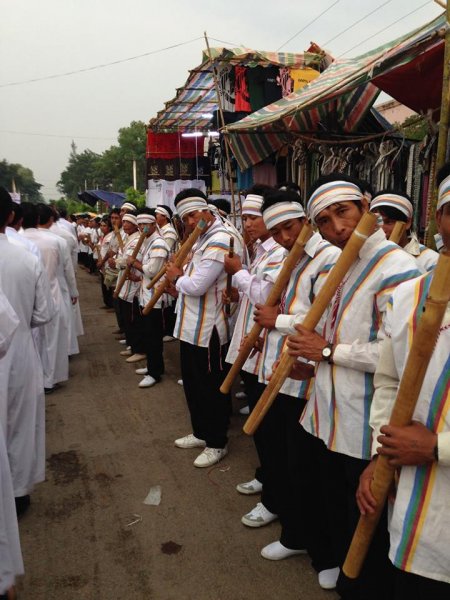
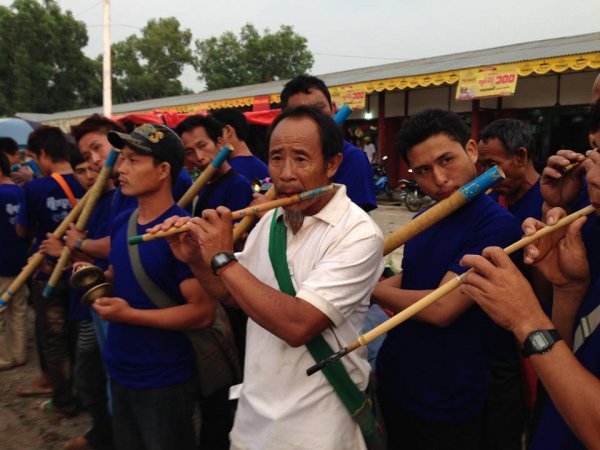
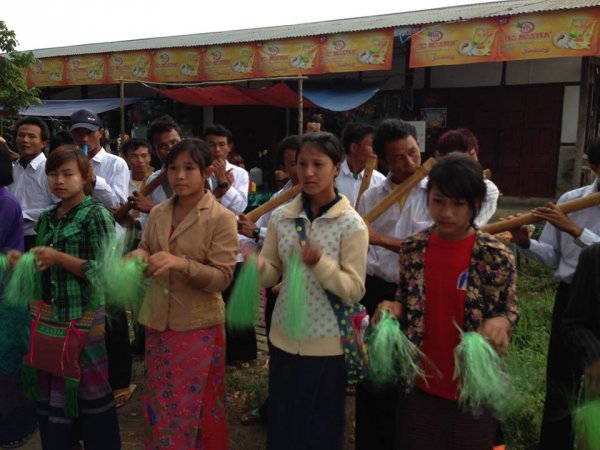

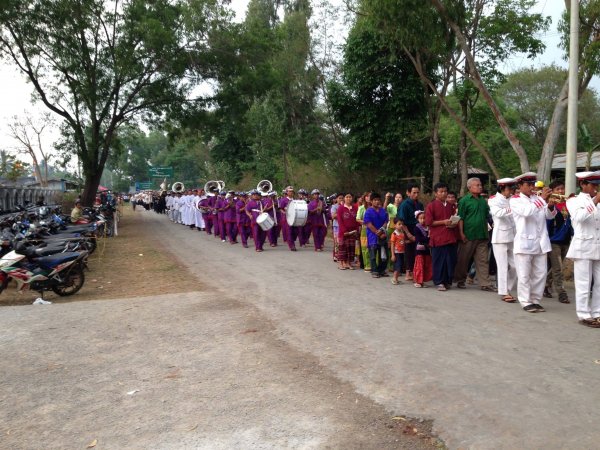
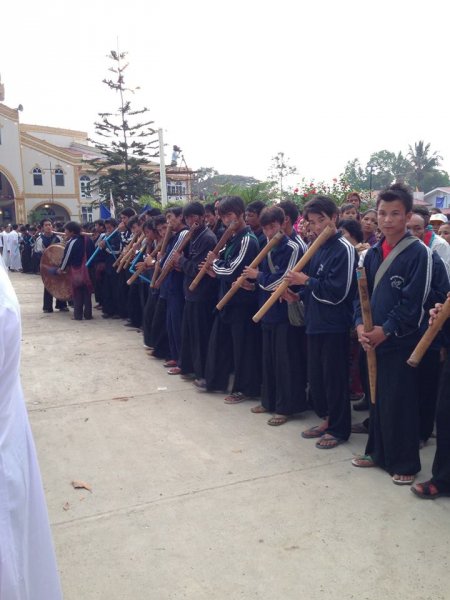
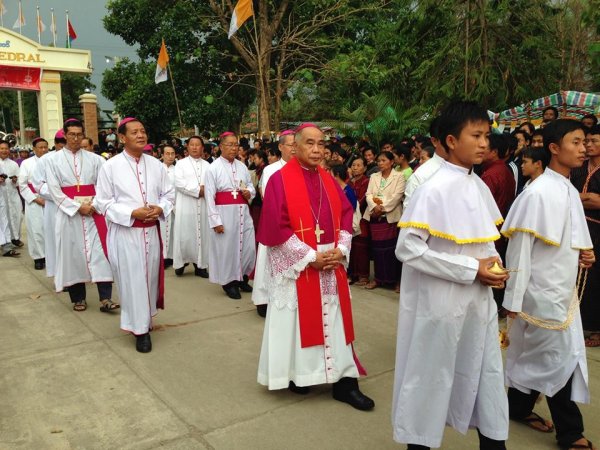
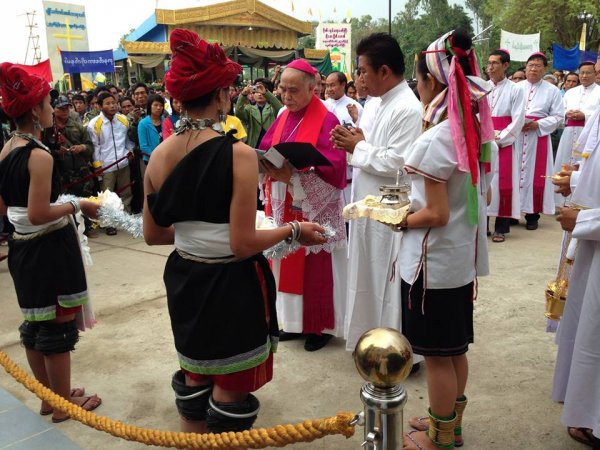
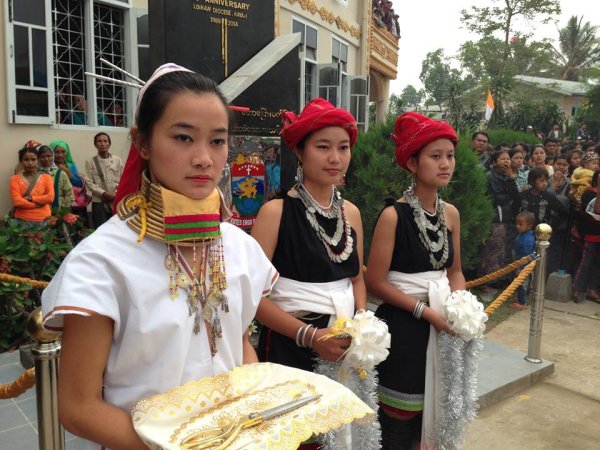
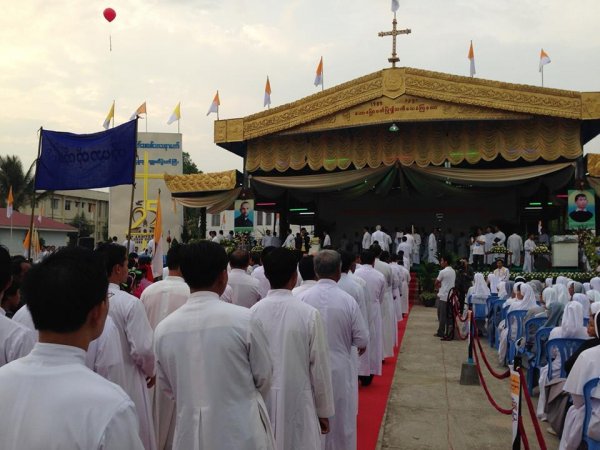
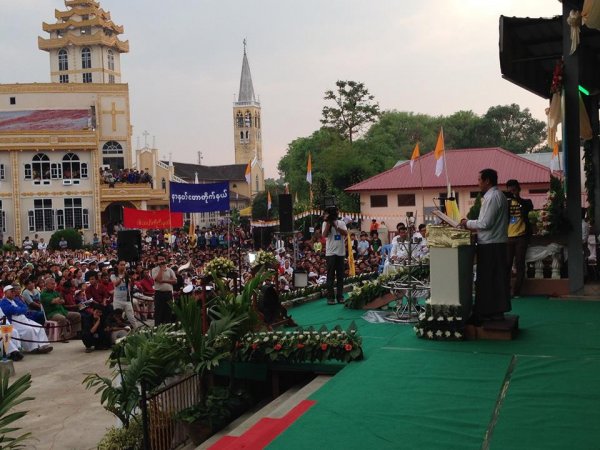
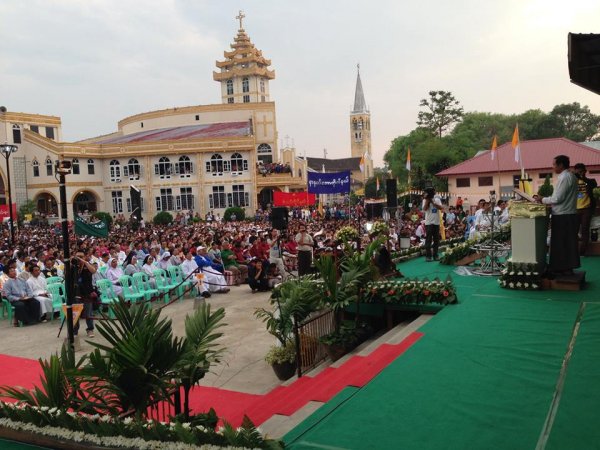

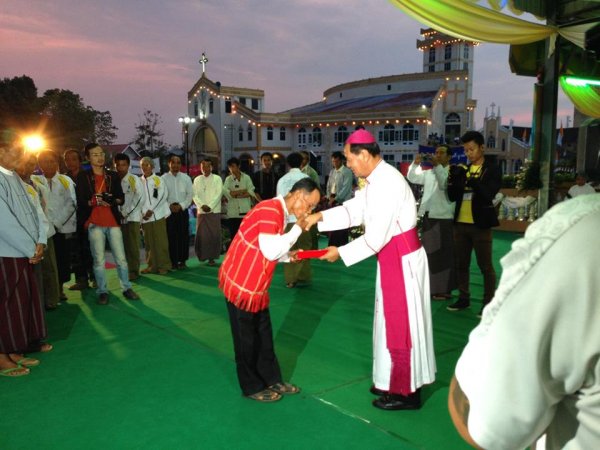
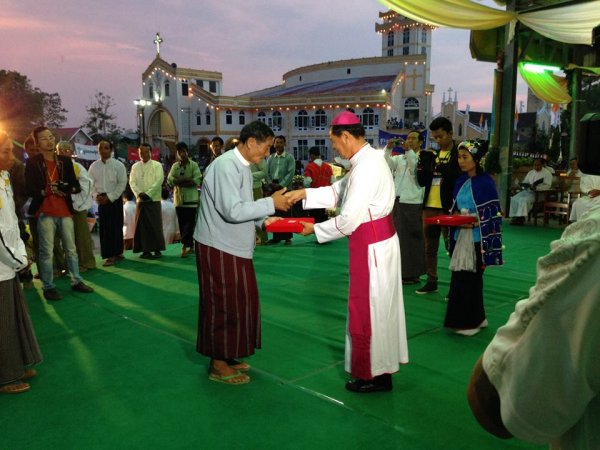
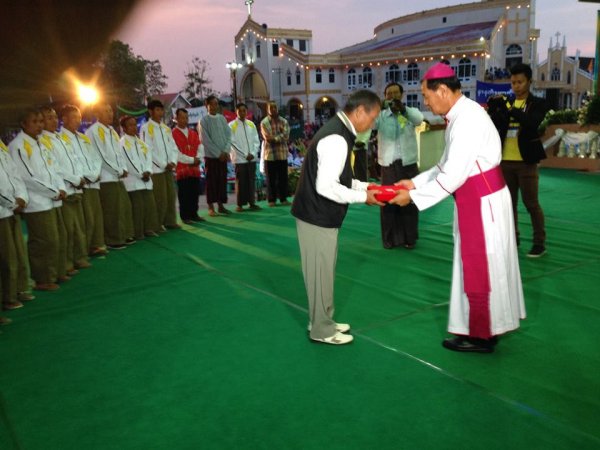
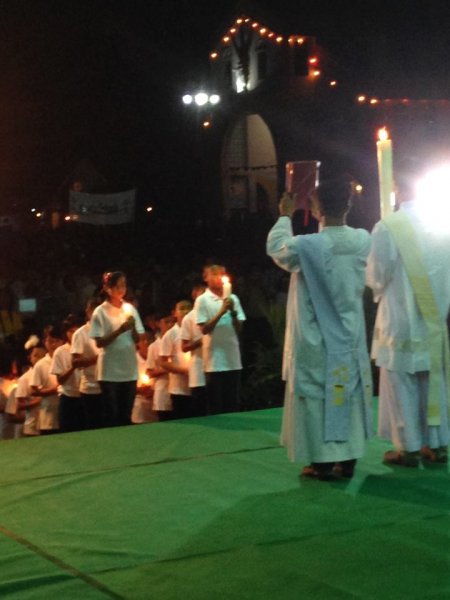
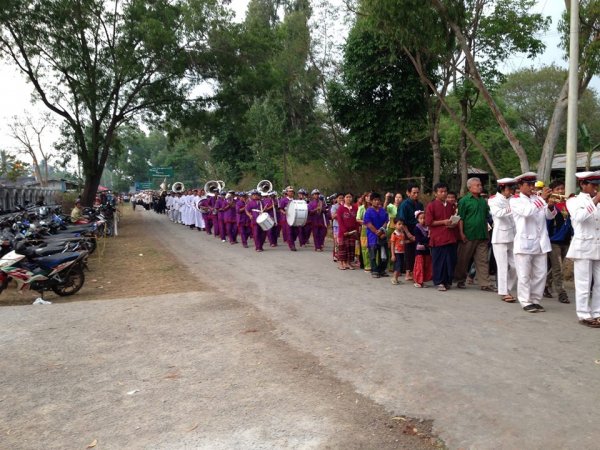
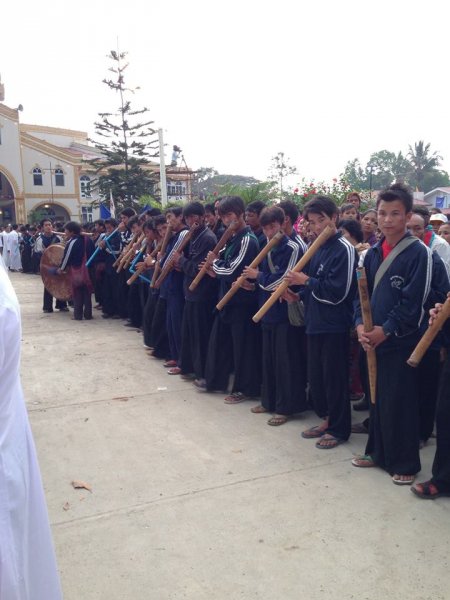

.png)










